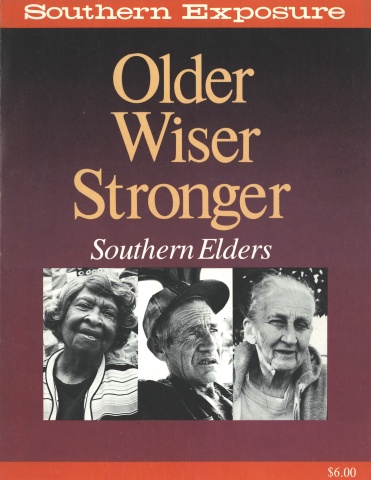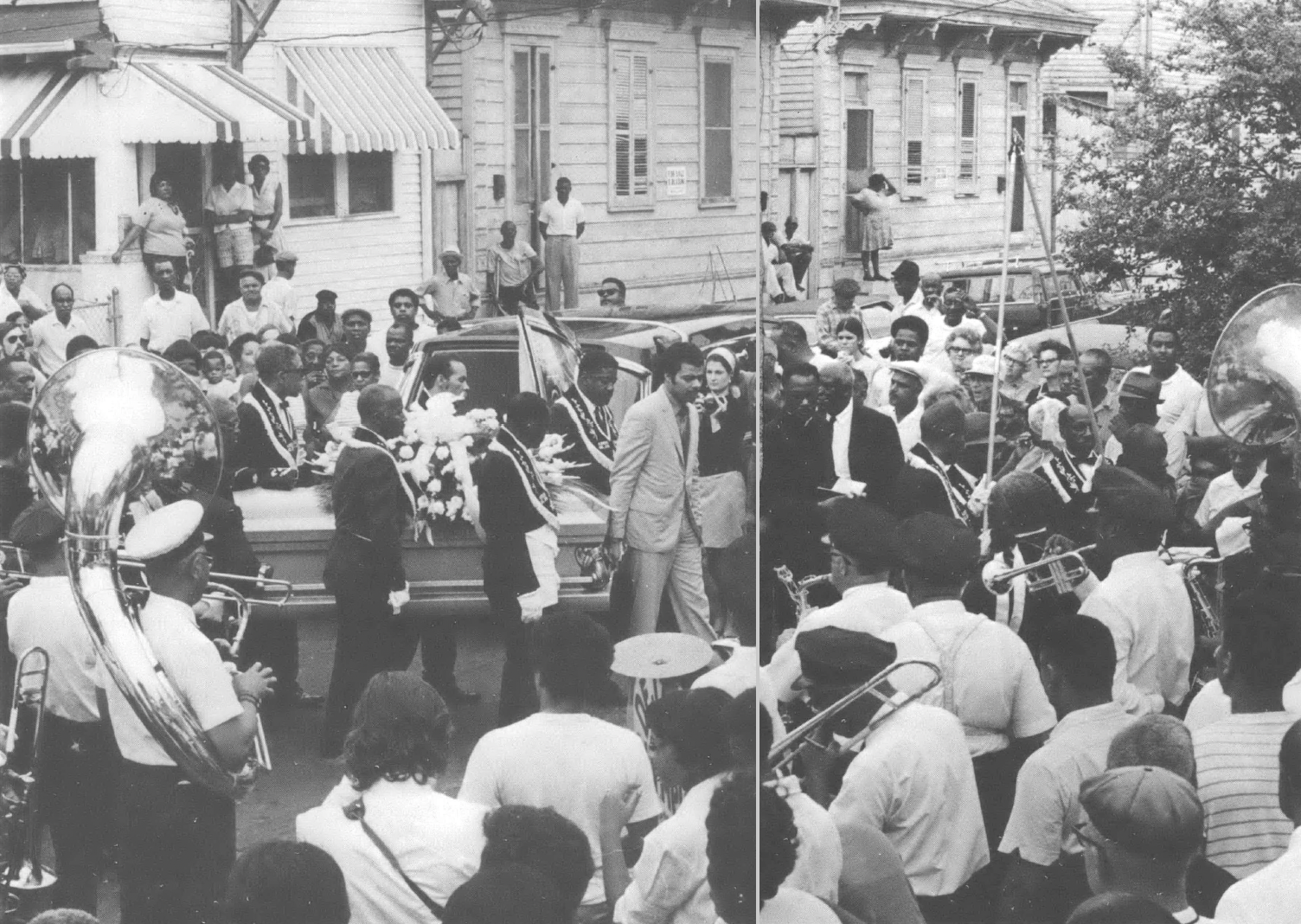
This article originally appeared in Southern Exposure Vol. 13 No. 2/3, "Older Wiser Stronger: Southern Elders." Find more from that issue here.
The nine-piece band marched down the street in time to the drumbeat. The body had just been buried, the relatives had gone to the widow's house, and the musicians were returning from the cemetery playing jazz with a crowd of followers, called second-liners, dancing along. Between numbers some members of the crowd chatted while some, wiping the sweat off their faces, tried to catch their breath in anticipation of the next outbreak of music. Others filtered through the crowd in an effort to catch up with one of the two other bands still playing.
I strode along with the Grand Marshal, who parades in front of the band acting as traffic cop, crowd control, and sometimes intermediary between the funeral home and band. Three bands was an unusually large number playing at a funeral, and I asked the Grand Marshal, "Who do you have to be to get three bands?"
He paused thoughtfully before replying, "You gotta be dead."
The jazz funeral procession is a tradition derived from New Orleans' gumbo of cultures. West Africans brought to the New World a highly elaborate funeral ritual with enormous amounts of food, singing, and dancing. When jazz developed it was naturally incorporated into the ritual.
The West Africans also brought a culture imbued with secret societies, which became current-day lodges and social aid and pleasure clubs. One of the primary functions of these organizations is to provide sick benefits and funeral and burial expenses for their members. The more organizations a person belongs to, the more elaborate his funeral, with the clubs hiring the band and frequently providing the crypt.
The traditional jazz funeral begins where the band forms —usually on a street comer or in a neighborhood bar. From there the musicians parade through the streets playing hymns in jazz time, to the church or mortuary where the body lies. The music draws families out of their houses onto their porches to watch the procession. Kids stream into the street to follow the band. At the funeral home the music stops. If the band leader has timed it well and the eulogies are short, the delay is brief. Preachers have been known to speak for three or four hours, but this practice has become less common since the bands have increased their fees and now charge by the hour.
After the service ends the band forms in front of the church and plays dirges while pallbearers load the body into the hearse. Then the entourage meanders through the streets. "The barroom where he used to bum might be six blocks. Had to go in front of the barroom," says Harold Dejan, leader of Olympia Brass Band. "Then you had to go to the graveyard if it was walking distance. Sometimes you had to turn him loose before you get to the graveyard. Then coming back they would make the parade all around where he used to bum."
Coming back the musicians pick up the beat. It is impossible to listen and not move. Many of the second-liners have developed their own distinctive trademarks. One teenager dances only on rooftops. You usually see him two to three stories high near the edge — hopping and bopping. Another frequent second-liner swings around light poles — don't get too near or you might get kicked. The traditional funeral ends where it began, usually in a bar.
Older band members and parade followers recall when two, even three funerals on a Saturday were common. Now, weeks pass between jazz funerals. Dirges are played less frequently and only the better, more experienced bands perform them well. Sometimes the bereaved family wants only a short musical remembrance, without the street crowds, and hires the band to play for only a block or two. But these changes are minor.
In the 60 years since my first parade the ritual of the jazz funeral has remained surprisingly intact. Each parade is unique, but they are all — in a comforting way — the same.
Tags
Jules L. Cahn
Jules L. Cahn, 68, lives in New Orleans and has been taking pictures since 1948. Since 1969 he has been making movies, some of which have been shown on BBC, ABC, NBC and CBS. (1985)

